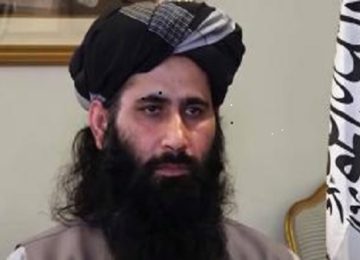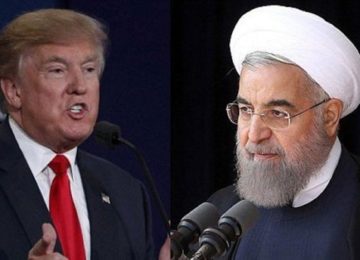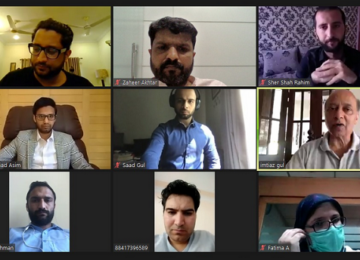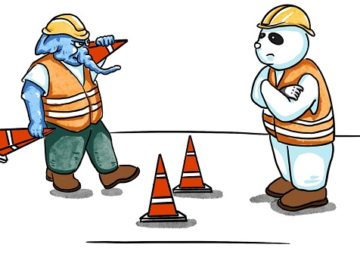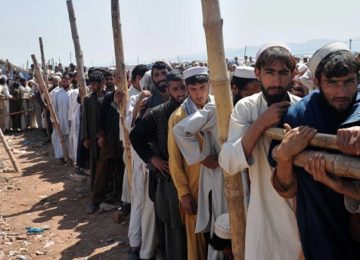September 23, 2019
Security has been deteriorating in the western province of Herat with the government and Taleban continuing to hit each other hard, particularly in districts farther from the provincial capital. Insecurity, together with the disillusionment after the previous mismanaged elections, is likely to result in fewer voters going to the polls on 28 September compared to past elections. Presidential hopefuls are, still, keeping an eye on this electorally significant province, although their campaign activities have been lacklustre in the provincial capital and nearly non-existent in the districts. AAN’s Reza Kazemi reports on the pre-election mood in Herat province. He notes that only the provincial government seems enthusiastic about the elections while those in the opposition are wavering, instead prioritising reconciliation with the Taleban.
Greater insecurity
Preparations for the 28 September 2019 presidential elections are being made amid aggravating security conditions across Herat province. Upon returning to Herat city, provincial capital, from a recent military operation against Taleban insurgents in early September 2019, Governor Abdul Qayyum Rahimi said, “The enemy [Taleban] doesn’t have a permanent foothold anywhere in the geography of Herat.” (1) He is right for the 15 precincts of Herat city and might be so for a few nearby districts such as Injil. However, for districts such as Zir Koh and Pusht Koh in the south where no voter registration has taken place and that are fully controlled by the Taleban as well as for vast swathes of territory farther from centres in most of Herat’s 17 remaining districts, the Afghan government’s authority has been increasingly challenged by the Taleban, as the author has learnt from discussions with local journalists, civil society activists and residents travelling between the city and districts.
Taleban insurgents have employed different tactics to undermine the government in Herat province. They have carried out attacks on government checkpoints, either hitting and running or overrunning and capturing them, in areas both far from and close to district centres. They have set up their own temporary and even permanent checkpoints on intra- and inter-district roads where they search for and target government employees, security forces in particular. As they have expanded their areas through these subversive activities, they have dictated their terms on public service governance and demoralised the government by killing top officials, such as district governors. They claim they are also an administration that runs public affairs in areas under their rule (see, for instance, the author’s previous case study of eastern Obeh district here and introduction to the subject here). Specifically on the coming elections, they have threatened people not to take part in it, either in campaigning or voting, and have vowed to disrupt the process.
As a result, the Taleban have actively challenged the government in many districts of Herat province. In western districts of Zenda Jan and Kohsan, the government has lost two district governors since 2018. Zenda Jan’s district governor was killed in a roadside bomb blast in August 2019 and Kohsan’s district governor was killed in an explosion in his office in November 2018. The Taleban claimed responsibility for the former but no one made a claim for the latter. In the other western district of Ghoryan as well as in Kohsan, the Taleban have exploded power transmission towers to enforce their instruction that either consumers pay their bills to them or there will be no electricity. This has caused outages in parts of Herat province that depend on imported Iranian electricity, as experienced by the author in Herat city.
Southern districts such as Adraskan and Shindand have been insecure for a long time. The largest, southern-most district of Shindand, for example, is home to the Taleban’s provincial headquarters. Of five districts in Shindand, two (Zir Koh and Pusht Koh) are, as referred to above, fully ruled by the Taleban and the remaining three (Zavul, Koh Zur and ‘rump’ Shindand itself – see map) are contested between them and the government. Shindand is a complicated place because two rival Taleban factions – one loyal to the mainstream Taleban led by Mullah Haibatullah and the other to a breakaway Taleban group led by Mullah Rasul – have continued to engage in bloody skirmishes, inflicting a heavy toll on each other (for a recent violent clash in August 2019, see this media report; for background on the Shindand conflict, read this previous AAN dispatch). (2) The splinter Taleban faction in Shindand reportedly has ties with and is supported by the government, which also uses it to hold back the main Taleban (previous AAN analysis on splits among the Taleban here).
Similarly, Taleban activity has been mounting in eastern districts. In Farsi, for example, the Taleban killed the pro-government militia commander who effectively served as district governor in late August 2019. In Obeh, they have carried out attacks on government checkpoints, including a concerted offensive on the district centre in early September 2019, which was pushed back only after airstrikes were called for. Security has also been deteriorating in northern districts. In late August 2019, the Taleban killed 14 pro-government militia members in Kushk-e Rubat Sangi district. They have also been further expanding and strengthening their positions in neighbouring Gulran district.
Zooming in on the provincial capital, Herat city has also been hit, mostly by improvised explosive device (IED) attacks. There have been three IED attacks since early August 2019, with the worst one killing four and injuring 26 others in Mahalla Haji Abbas, a predominantly Hazara area on the outskirts of Herat city. No group has claimed responsibility for the attack.
And zooming out to the provincial neighbourhood, all of Herat’s three adjacent provinces are insecure, albeit to varying degrees. The Taleban have a growing district presence and even attack the provincial capital in Farah in the south (for their most recent attack on Farah city, including on the provincial police headquarters, see this media report and additional information in this AAN dispatch). In the north in Badghis, heavy fighting between the government and Taleban has resulted in a deadlock, with government controlling district centres and Taleban surrounding but not attacking them for fear of airstrikes. And the Taleban battle pro-government militias with a view to collapsing districts in the eastern neighbouring province of Ghor.
For its part, as elections have approached, the provincial government has launched a series of military campaigns. Through these operations, it has hit the Taleban hard, pushed them out of some areas and killed some of their top commanders and officials, including shadow district governors, particularly in the eastern and northern districts (see these media reports here and here). The government seems determined to continue its military campaigns, including airstrikes, and is reportedly dispatching more troops to secure elections in the districts.
This overview of security circumstances is relevant for the elections, as it is largely security that determines where elections may be held, whether voters will dare to vote and election monitors dare to be present. This then has serious implications for how representative, free and fair the elections will eventually turn out to be.
Fewer votes
Because of a host of factors including mounting insecurity, polling has shrunk in Herat province over time. Available data shows that opened polling centre numbers in Herat have gone down by about 110 over the last decade: from 400 in the 2009 presidential and provincial elections to 351 in the 2010 parliamentary elections to 287 in the 2018 parliamentary elections as illustrated in the chart. (Data sources have been given in footnote 3.) For instance, of a total of 462 planned polling centres for October 2018 parliamentary elections, only 287 (ie 175 polling centres or 37.9 per cent less) opened in Herat. Although the exactness of this data might be disputed because we still lack credible election statistics, the fact that polling has significantly dwindled in Herat, as elsewhere around the country, is beyond contention.
At the moment, no one has a clear-cut prediction about how many polling centres will actually open for the coming elections in Herat province. When the media earlier reported that the Independent Election Commission (IEC) was told by the security authorities that 162 polling centres would be closed for security reasons in Herat, Governor Rahimi rushed to the provincial IEC office where he and the provincial IEC head, Daud Seddiqzad, rejected the “claim by some media about closure of tens of polling centres in Herat.” Then and on several subsequent occasions, they maintained that, similar to the 2018 parliamentary elections, 300 polling centres would open for the upcoming elections. As discussed above, however, they were not correct in citing the 300 number as only 287 polling centres opened in the last elections; only in Herat city and immediate Injil district did all designated polling centres open in 2018.
However, the provincial government’s position has changed as we move closer to the 28 September poll. On 11 September, Seddiqzad admitted that security officials have informed the IEC that it is “impossible to hold elections in 32 polling centres in Gulran, Adraskan, Chesht-e Sharif, Farsi, Zavul and Koh Zur districts.” He also said that “70 other polling centres are under high security threat on a district level.” In a conversation with AAN, Seddiqzad elaborated:
Only in Herat city and [surrounding] Injil district will all planned polling centres be opened. Excluding them, more or less polling centres will be closed in all districts throughout the province. The number of polling centres that will actually close or open depends on security conditions.
So, this brings Herat’s polling centres from 300 down to 268, as of 22 September 2019. However, polling centre numbers might even go lower (5), despite government’s increased efforts to provide security for the elections. District reports converge on decreased polling for the upcoming elections:
In Kohsan [district in western Herat province], the Taleban have warned people not to go to the poll. Many areas are under their control and many polling centres then are under threat. You’ll need to send security forces in Rangers and Humvees to provide security for the polling centres.
– An IEC employee in Kohsan district, speaking to AAN
I was in a village near Obeh district centre when election materials like ballot boxes were being flown in by helicopters. The Taleban who were aware about it started firing rockets on empty lands around the district centre. They indirectly again showed their opposition to the elections and warned people not to take part in it.
– A local elder in Obeh district, speaking to AAN
What is at stake is not the election maths but their consequences. Deteriorating security leads to less access to polling centres and that may lead to disenfranchisement across the province. This was observed in the last general elections in October 2018, when large numbers of voters were prevented or abstained from registering to vote mainly on security grounds (see the author’s 2018 pre-election dispatch). As for about 539,000 registered voters in the 2018 elections, some 197,000 (36.5 per cent) did not vote because they “faced technical shambles, closed polling centres and Taleban threats or were disinclined to vote” (details in the author’s 2018 post-election dispatch). A larger number of closed polling centres points to even greater disenfranchisement in the coming elections.
Equally concerning is the much greater disenfranchisement in rural areas where security is worse, turning the imminent elections into a predominantly urban vote. This might damage how representative the elections will be. The greater urban bias has continued in recent top-up voter registration in Herat province where only some 30,000 new votes were added to its 2018 voter list. Although this was the fourth largest on a national basis, it seems that again not many eligible people have opted to register and voter registration has again mostly taken place in provincial and district centres. Nonetheless, Herat’s registered voter numbers have now risen to 569,000 (based on the 2018 IEC data) or 571,000, according to Seddiqzad, who spoke to AAN.
At the same time, polling centres in insecure areas where candidate agents and observers have little access are highly prone to fraud. This was observed in the last parliamentary elections in October 2018. Then, there were serious allegations of election manipulation such as ballot box stuffing, the use of fake tazkeras (national ID cards), campaigning for candidates near and even inside polling centres and general illegal interference by actors such as commanders, elders, candidate agents and even local IEC staff, particularly in insecure districts. Possibilities of fraud might then undermine how free and fair the upcoming elections will be.
Pre-election politics
The election campaign that began on 28 July has had a lacklustre start and an uninspiring continuation (details in this recent national-level AAN dispatch). In informal conversations with AAN, Heratis from different walks of life echoed the general lack of interest in the imminent polls; one reason might be that unlike previous presidential elections, the coming elections lack a direct local component (eg simultaneous provincial or parliamentary elections) to contribute to voter motivation and mobilisation:
It feels like there isn’t going to be any election at all. People say, why waste our time on going to vote? Things have just got worse; there’s more war and people have got more unemployed and poorer. There are many families in our tribe but none is interested in voting this time.
– A resident of Guzara district
My classmates and I seldom think and talk about the coming elections. I voted last time and even worked as a candidate agent. What happened? Only things got worse. There’s more insecurity. More people have rushed to Herat city because other areas [in the districts] aren’t safe. And as young women, we feel less and less secure when we go out to attend our classes or do other things.
– A female student in Herat University
Seven people can vote in our family but none has registered to do so. We didn’t go to have stickers pasted on our tazkeras and so didn’t vote in the last elections. We went and voted for Karzai and Ghani in elections before that but they did nothing. We’re more and more disappointed about how things have gone in Afghanistan. So, why go, bother and vote at all in these elections? It’s better instead to use the time to work in my rickshaw.
– A rickshaw driver, Herat city
Regardless of the largely downbeat mood, Herat is electorally significant. In the 2018 parliamentary elections, the province achieved 60 per cent of registered voter turnout and comprised 9 per cent of the national total vote (details in this recent AAN dispatch). As a result, Herat came out second only to the capital Kabul and was followed by the five provinces of Nangarhar, Balkh, Takhar, Baghlan and Kandahar – the seven provinces, all with large cities as their centres, where more than half of the parliamentary votes (53 per cent) were cast and that are likely to determine who the next president of Afghanistan will be.
Herat’s electoral importance has therefore drawn the attention of presidential hopefuls. So far, local networks affiliated with the two heads of the National Unity Government (NUG) (ie President Ashraf Ghani and Chief Executive Abdullah Abdullah), the key contenders in the coming elections, have been pursuing their campaign activities more actively than others. They have been courting various groups of people and putting up posters, banners and billboards, mostly in the provincial capital. Candidates such as Faramarz Tamanna (a local Herati), Sayyed Nurullah Jalili (who reportedly has business associates in Herat), Nur ul-Haq Ulumi (whose second running-mate, Muhammad Naim Ghayur, is a local Herati) and Gulbuddin Hekmatyar (who has party sympathisers in Herat) have also gathered their supporters to hold campaign rallies, but they are seen as marginal candidates in the presidential race. Only these four and President Ghani have so far personally come to Herat to woo voters. Another candidate, Ahmad Wali Massud, has also travelled to Herat but mostly for other political business that will be discussed below.
Outside Herat city, though, there has been little to no election campaigning. “On the way from Herat city to Islam Qala” (the international border crossing with Iran, including the entire Kohsan district, of which Islam Qala is a part), an IEC outreach employee said, “not a single candidate poster, banner or billboard is seen.” “The IEC has only put up some ads, urging people to go and vote in the elections,” he added. In the eastern districts of Pashtun Zarghun and Obeh, a local resident from Obeh told AAN:
There’s been no campaign at all. Who dares campaign for candidates? The Taleban have warned people not to take part in the elections. They mean what they say. Even if elections take place in Pashtun Zarghun and Obeh, it will be in the district centres and a few surrounding villages. Things might change, though, because I’ve heard that the government is dispatching more troops to provide security for the elections. And even if this happens, I don’t think things will change much.
There is not much campaigning in nearby districts, either. In Guzara district centre, 15 kilometres south of the provincial capital, for instance, a shopkeeper told AAN:
Only a few billboards have been put up, especially around the bridge between Guzara and Injil [districts]. There’s little campaigning in Guzara. Only some pro-Ghani people have rented a few rooms in a building where they gather, have their tea and then go back home. Provincial and parliamentary elections were much more bustling. There were posters, banners and billboards everywhere. There were daily meetings and ceremonies in which they fed lots of people. Not much noise and activity for this election. It’s better because we don’t want insecurity in our areas because of elections.
Moreover, even in nearby districts such as Zenda Jan to the west, candidate agents often are afraid of campaigning because they are worried about life post-elections. A candidate agent from Zenda Jan spoke to AAN during a campaign rally in Herat city in July 2019:
I can campaign for my favourite candidate if I live here in Herat city. But in Zenda Jan, it’s much more difficult. I might be able to do some campaign activity in the district centre, but I’m concerned about life after elections are over. Elections are for more-or-less one day, but I and my family will live in the district for long. I can’t risk life for a day or two.
Nevertheless, provincial government officials have been pushing for the elections, stressing that it is a “national process.” According to some local civil society activists and journalists whom AAN has spoken to, Abdul Qayyum Rahimi (brother to Abdul Salam Rahimi, currently state minister for peace affairs and formerly chief of staff to President Ghani) was appointed provincial governor in late January 2019 – around eight months before the poll – for the purpose of campaigning for the president. In stark contrast to all previous post-2001 governors who preferred to stay in and govern from the provincial capital (details in the author’s previous dispatch), Rahimi has been extremely mobile, constantly travelling to near and far districts, accompanying the military in their large-scale operations and moving around Herat city to meet a wide variety of people including district elders, ethnic figures of influence, religious leaders, women, business people, youth and government civilian and military officials.
At the same time, more ministers (eg Minister of Transport Yama Yari, a local Herati, who is close to President Ghani) have been coming from Kabul to join Governor Rahimi to launch or expedite the implementation of infrastructure projects such as the long-delayed Herat-Chesht-e Sharif road and the Pashdan hydropower dam in Karukh district. Or, ministers have been coming to inaugurate or announce the construction of clinics, schools and other projects in different districts, potentially spending millions of dollars and creating lots of jobs. In carrying out these endeavours, the provincial governor has been joined by numerous other public officials, including the pro-president chief of the provincial council (Haji Kamran Alizai), heads of various government departments and district governors. Although the provincial government emphasises these efforts have nothing to do with elections and are part of pre-planned and day-to-day administration, the hustle and bustle has raised questions about why the government has become particularly active as elections have approached.
However, there are others who have been not only unenthusiastic, but also pessimistic about the coming elections. Foremost among them is Ismail Khan, the longstanding Herati heavyweight. While his favourite team of Hanif Atmar was disintegrating (details in this recent AAN dispatch), Ismail Khan told the daily newspaper Hasht-e Sobh that he doubted elections would be held because “so much blood has been shed in Afghanistan” in the on-going war. (4) If elections were held, he said, there would be “widespread fraud.” The consequence, he argued, would be “a more hostile Taleban, more insecurity, more war and migration of people.”
Ismail Khan is therefore yet to decide on whom to throw his support behind, although several candidates including people close to President Ghani have courted him for his blessing. Instead, he has been looking for ways other than elections to, as he sees it, “save Afghanistan” from the on-going war.
His proposal came to the fore when he hosted a like-minded group of Jamiat-e Islami party leaders, including former Balkh governor Atta Muhammad Nur, former vice-president Yunus Qanuni, former defence minister Besmellah Khan Muhammadi and presidential candidate Ahmad Wali Massud for discussion in his mansion in downtown Herat on 10–11 September 2019. They established what they called “the first core of Majma-e Solh wa Rahai-ye Afghanistan az Bohran (Forum for Peace and Saving Afghanistan from Crisis),” which they said would expand as more “national personalities and political parties” join it, and they issued a statement (seen by AAN). Their statement prioritises attempts for bringing about a “just peace” and “all-encompassing intra-Afghan negotiations” over efforts for holding elections, which if held, they maintained should be “transparent, fair, legitimate and acceptable for the Afghan people.” Furthermore, some of them like Atta even called for the establishment of an interim government to ensure that the peace-precedes-elections proposal is carried out. There was, however, no further elaboration of both the idea (peace first, elections second) and its implementation (interim government formation). This opposition group has recently been to Kabul, meeting, among others, former President Karzai in order to push for their agenda.
Conclusion
Insecurity and the general lack of interest in the coming elections suggest that polling might significantly decrease for the looming 28 September 2019 presidential elections in Herat province. As of 22 September, almost a week before polling day, the number of open polling centres has dropped from 300 to 268, of which 70 are under “high security threat” in districts across the province. Only in Herat city and surrounding Injil district will all designated polling centres be opened. This is highly likely to result in the lowest polling numbers in Herat in any elections post-2001. As such, it will potentially lead to widespread disenfranchisement and a predominantly urban vote, damaging how representative the impending elections will be. Serious questions also remain on how free and fair the upcoming poll will be, especially in insecure regions that are difficult for candidate agents and observers to access.
Even if security circumstances permit polling, it is uncertain how many voters will be motivated to go to ballot boxes this time; the disappointment arising from the last chaotic elections in October 2018 is still fresh in their minds. Presidential hopefuls who have had an eye on the electorally important province of Herat also seem uninspired to mobilise voters through campaign activities that have thus far been lacklustre in the provincial centre and nearly non-existent in the districts.
Only those in the provincial government have been pushing for the elections. For them, election is paramount because it determines (or maintains, as they expect) their political future. Those in political opposition to the government have been far less enthusiastic, partly because they may have calculated that the current government cannot be overturned through elections. So, they maintain that there should be reconciliation with the Taleban before elections take place. Nonetheless, elections are fast approaching, for better or for worse.
By Special Arrangement with AAN. Original link.




